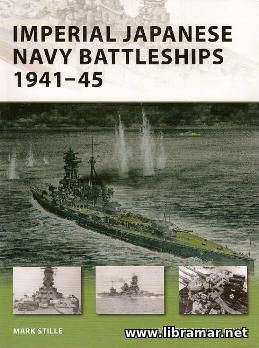 The content of this publication presents a balance between the operational and technological history of the Japanese battleships that serves at the times of the Second World War. Each of the vessels and classes has been given with the concise yet very clear historical information related to the initial development and subsequent refits; the operational use has also been addressed.
The effects that the other nations had to these vessels has been commented, as well. From the operational point of view the publication will shed some light on both tactic and strategic views spanning the vessels. The text content of the publication has been supplemented with the numerous informative images and color plates in order to enable readers get the full picture of the vessels addressed within the book. The author has thoroughly and clearly examined the Japanese battleships.
It should be noted that the combined fleet of the Japanese Navy forces contained the really huge battleships, largest ever constructed. The document describes the design and construction of five famous classes of the vessels that served in the Japanese Navy, their armament, wartime service and modifications. The main purpose of the publication is purposed to be used as a reference material by both general readers and specialists.
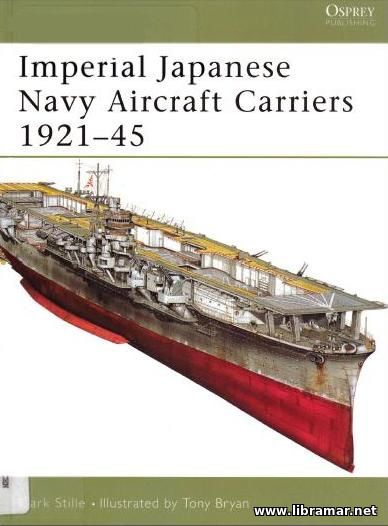 The Navy of Japan in the period covered within the present publication written by Tony Brian in collaboration with Mark Stille, was treated as a genuine pioneer in the field of naval aviation, who performed the commissioning of the Hosho carrier, the very first one to be built straight from the keel up. In the time between 1920 and 1930 the Imperial Navy experimented with the carriers, trying to further improve their design and construction.
This all has resulted in a remarkably effective naval aviation of the Imperial Japanese Navy by the time their country entered the Second World War. This nice and informative volume is covering the design of those vessels together with the operation and development of those Japanese aircraft carriers constructed prior to and also during the Second World War.
The author has paid particular attention to the philosophies that used to drive the design of the Japanese aircraft carriers. It shall be noted that some of the carriers have been originally laid down as battle cruisers or battleships and later converted to the aircraft carriers following the Washington Naval Treaty.
The construction of the carriers will give the interested readers a good technical insight into why those carriers suffered the mortal wounds that the American carriers could actually survive, e.g. the construction of the fuel lines and tanks etc.
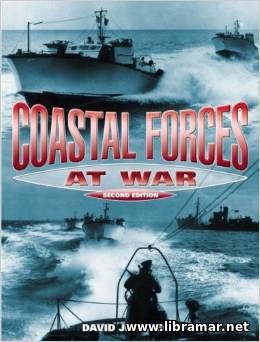 I joined MTBs early in January 1940 and then spent nearly seven years either in the boats or on the staff or in the Admiralty, doing jobs connected with Coastal Forces After I was invalided out of the Royal Navy in 1956, I spent more than 20 years working for Vosper, one of the major designers and builders of small, fast warships. So I have been involved with Coastal Forces for much of my working life, and I have, naturally, a special affection for these warships, and some knowledge of them and their history.
For a naval officer, the main attraction of small ships is the marvelous opportunity which they give for command at a young age. For both officers and men there is also the sense of belonging to a team, living in close company, and with everyone playing an important part. A worked-up, efficient Coastal Force craft in wartime was a really very special team of shipmates and friends. Since Peter Scott wrote his excellent Battle of the Narrow Seas in 1945, there have been a number of books published describing the boats, the people, and the battles. Some have been good, and some less so - but every accurate history is valuable in helping to keep the record straight for the future.
David Jefferson has written an excellent and well-researched record, which is specially valuable in that it includes a number of pieces of the story which have been little reported elsewhere, in particular regarding the landing of agents and small raiding units in Brittany and other places, mainly by the 15th MTB Flotilla, and the story of the return of the 1st MTB Flotilla from Malta to the UK through the canals of France late in 1939. I commend this book to everyone who is interested in the story of Coastal Forces.
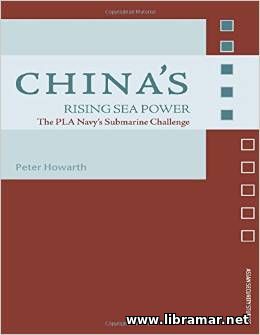 Since the time the Cold War ended, the focus of concerns about maritime security has shifted from the threat of disruption to seaborne trade resulting from armed interstate conflict at sea towards threats posed by non-state players in the form of piracy, illegal fishing, smuggling of people, drugs and arms and, particularly since September 2001, terrorism. There is good reason for this concern. The incidence of the piracy, particularly in Southeast Asian waters, has increased significantly, particularly since the 1997/8 Asian financial crisis.
The 2002 annual piracy report released by the International Maritime Bureau recorded a worldwide total of 370 attacks in 2002 compared with 335 in 2001. The highest number of attacks occurred in Indonesian waters (International Chamber of Commerce 2003). Terrorists have demonstrated dramatically the feasibility of attacking ships in ports or at sea with the suicide boat attacks against the USS Cole in the port of Aden in October 2000 and the attack against the French-registered tanker Limburg in the Gulf of Aden two years later. It would not be beyond the means of a well-organised terrorist group to use the tools and methods of Southeast Asia's pirates to attack shipping in the narrow waters of the Malacca, Sunda or Lombok Straits and cause major disruption to the maritime commerce on which the economies of Northeast Asia are so heavily dependent. Even more worrying is the prospect of terrorists using a ship as a delivery vehicle for weapons of mass destruction, detonating such a device in one of the major ports in Asian region.
Attacks of this kind could seriously undermine the prospects for continued economic growth in China, Taiwan and South Korea and economic recovery in Japan by raising the cost of imported raw materials. With China's economic growth increasingly serving as a major source of growth not only for the other Northeast Asian economies but also for the United States, Europe and Australasia, a terrorist attack on shipping in the chokepoints of Southeast Asia could have negative repercussions for the world economy as a whole...
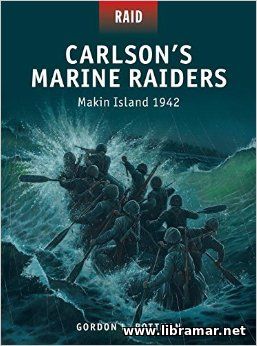 In 1942 the US were battling trying to change the course of the Pacific War. Several months after the Japanese attacked the Pearl Harbor, the American nation had undertaken staggering blows, namely the loss of the Wake Island and Guam, together with the surrender of the Corregidor Islands and fall of the Philippines. The BC, i.e. British Commonwealth, suffered the equally disastrous losses throughout the entire geographical region; in addition to that, the Dutch East Indies featuring really vast natural resources, fell under the control of Japanese army.
It was the year 1942 when the Japanese conquest reached the fullest extent. Since the road back was expected to be extremely difficult, Americans had to use the every single opportunity to inflict the damage. In 1942 they launched the Doolittle bomber which inflicted not too much of the real damage on Tokyo; this, however, proved to be a truly morale boost to the whole American nation.
Even before the fall of the Philippines, the defense forces of America started to occupy the South Pacific islands not yet occupied by the Japanese who have originally intended to proceed with their conquests across the South Pacific. The strategy of the Japanese forces was to starts with the Midway and then move to Fiji, Samoa and New Caledonia, that were all defended by the Allied forces...
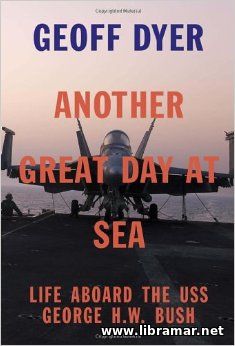 An excellent historical volume prepared by the famous author, the world recognized expert Geoff Dyer. The author's account of his stay on board the vessel has been appreciated by the readers and has been found to be blissful and full of curiosity, featuring the real admiration for the ship crew and very difficult and dangerous work performed by the crew members.
The content of the publication is truly remarkable making this book so funny starting from the very beginning and up to the end. According to the readers, it is moving, very generous and fresh. The author of this volume is deservedly considered maybe the most inquisitive writer of today, an excellent stylist and charming reporter, and this work has actually proven this fact.
The readers of this book will definitely learn more about the aircraft carriers even that they ever expected. The antic, inventive and anxious mind of the author and his approach of presenting the information makes the book very popular and interesting. The content of this book is as concentrately fascinating and funny as any other publication by this author. Just have a look and we do promise you will not get disappointed as you will be impressed with the story...
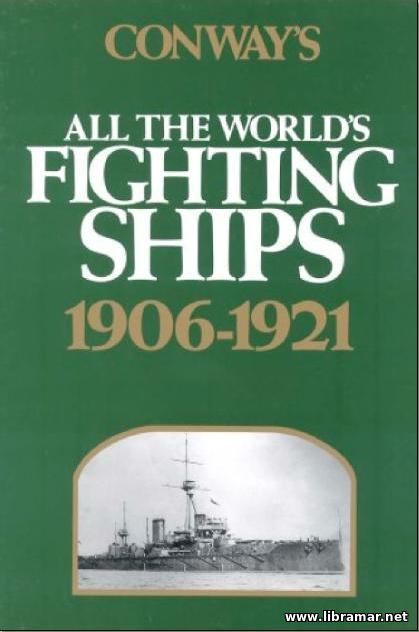 In 1906 the Royal Navy was just beginning to feel the effects of its dynamic new First Sea Lord, Sir John Fisher. But there were underlying causes for the technological ferment, which owed nothing to the driving force of Fisher. The great partnership between the Admiralty and the naval armaments industry had come to full flower, to a point where even the Royal Dockyards were at such a peak of efficiency that they could compete on an equal footing with private yards.
Sir William White, the Director of Naval Construction (1885-1901), had taken the reputation of British designs to the forefront of world opinion, so that exports helped to keep building costs competitive. Even more important, the emergence of the German Imperial Navy as a new threat provided a political spur to maintain the rate of expansion started by the Naval Defense Act in 1889. The pace of technical advance had paradoxically slowed sufficiently to permit a period of consolidation. Armor was no longer changing almost yearly, and so there was no race between gun caliber and protection to bedevil the designers.
The Parsons steam turbine was now proven, and needed only the endorsement of the Admiralty to displace reciprocating engines. And last of all, after four decades of largely theoretical discussion of warship design, there was now the practical experience of the Russo-Japanese War of 1904-5 to shape ideas about how warships should fight. The Fisher dictum 'Build First and Build Fast, Each One Belter than the Last' made a rousing slogan, and industry responded magnificently by turning out large numbers of ships at astonishingly short intervals. As one commentator had said, the flame of genius burned uncertainly in Fisher, and in his enthusiasm for the new technology he showed surprisingly little understanding of its implications. Thus the basic design of the Dreadnought was repeated in two classes, before any valid lessons could be learned from the prototype.
Similarly the new armored cruisers were repeated with no attempt to eradicate any weaknesses. Speed was Fisher's god, and in his zeal to increase speed in every category be created severe problems. The time given to prepare designs for the new destroyers, for example, was ludicrously short, and as a result, the Navy was saddled with ship of considerably less utility than the previous class - and at higher cost. The mania for speed soon infected the whole Navy, and it became the habit to credit ships with absurdly high speeds on trials.
The policy of deception spread to other areas, and the battle cruisers in particular were credited with spurious Fighting qualities. As is so often the case, the deceivers ultimately came to believe their own deception, thereby defeating whatever object Fisher may have had in mind... There are three more books in this series covering the periods 1860-1905, 1922-1946 and 1947-1995.
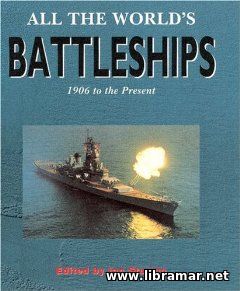 The 175 completed capital ships from fifteen navy fleets have all been fully described in these pages, as are the numerous further unbuilt ships that were aborted by World War or naval treaty. Data in contemporary naval reference books were often unreliable, as navies were seldom entirely open about their latest types, whether completed or not; this book corrects the record by using declassified information on Stalin's two-ocean battlefleet plans to reach the West.
Ship classes have been generally represented by both a photograph and a line drawing; wherever possible, these show appearances both before and after alterations. Line drawings, many specially commissioned, are to 1:1250 scale except were indicated. The book by Ian Sturton may be treated as the essential reference source as it is a good compendium of virtually all battlecruisers and battleships constructed from 1906 onwards. The ship line drawings are showing the profiles of the vessels and the images has been well chosen by the author.
The content is quite comprehensive in its detail and scope. The volume is making a truly perfect desk reference for the naval history students providing extensive technical details of the battleships that were designed in the historical period 1906-1940. The specialists in the field will also find it valuable.
|







